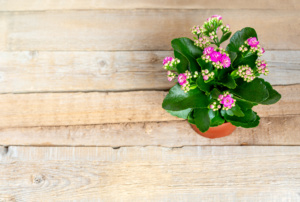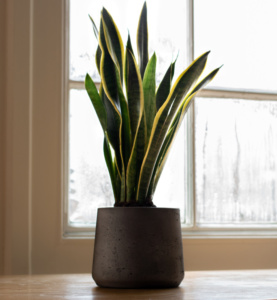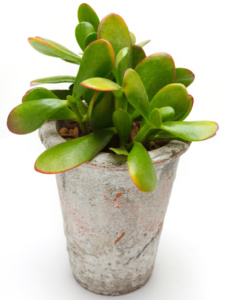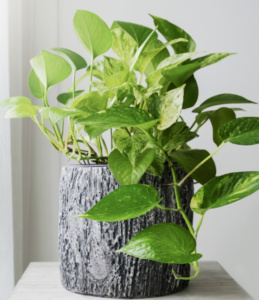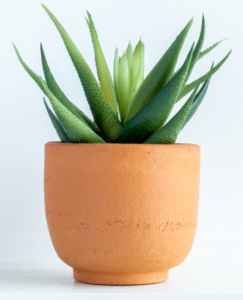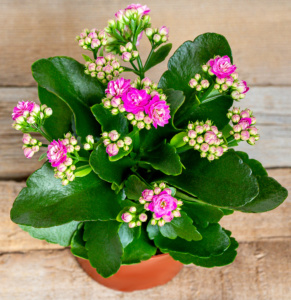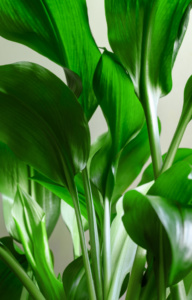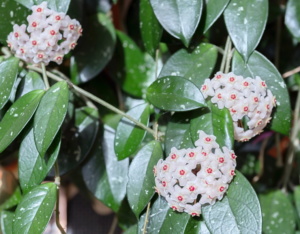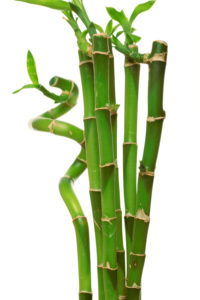13 Hard to Kill Houseplants
For Black Thumb Gardeners
Article Courtesy of | Tom Kraeutler, The Money Pit
Were you born with a black thumb? Is your home a place where common houseplants go to die? Have you stopped bringing leafy green beauties home because you know they’ll soon turn to a brittle, brown reminder that you are, in fact, a murdering serial killer of plants? Well, fear not! With the right plants and a few tips, we can help get you on the path to redemption and forgiveness with healthy houseplants.
There are lots of reasons for having a healthy crop of houseplants, including plenty of research about unexpected ways plants, are good for you. It turns out that common houseplants make people feel better. They reduce blood pressure, increase attentiveness, and even help people feel better about their jobs. As if that weren’t enough, plants also clean the air; reducing toxins and helping you feel good in a whole different way.
Even if you’ve never had success with keeping plants alive in the past, you can still reap all the benefits plants have to offer, and add beauty to your home, by choosing easy to grow houseplants that will bring a touch of nature indoors. Here’s a good selection to start with:
Hard to Kill Common Houseplants
One of the main problems people run into when they’re trying to grow common houseplants is that they pick plants that have fussy needs. If your new plant requires lots of light and your home doesn’t have much, it’s going to languish. Or if it needs constant moisture and frequent fertilizing and you’re just not that consistent, it’s going to be stressed. The trick is to choose a plant that is well suited to what you have to give it. Fortunately, there are plenty of beautiful and low-maintenance plants to choose from.
Snake plant. Also known as mother-in-law’s tongue, this hearty plant likes a lot of light. Other than that, it can go weeks without attention (unlike mothers-in-laws). If it gets enough light, it will even bloom, growing a stalk of fragrant, light green blossoms.
Jade plant. An attractive succulent, the jade plant also needs plenty of light but not too much water. If the soil feels dry, water it. If it gets dry enough, it will go dormant for a while, buying you extra time between watering.
Golden Pothos. This plant also goes by the name Devil’s Ivy, but it’s definitely on the side of good. It’s one of the plants named by NASA as an excellent air cleaner. It likes to dry out between watering, but if it starts losing leaves, it’s too dry. It can handle low light.
Aloe. Cooks like to keep this spiky succulent in the kitchen so they can snap off a fleshy leaf to treat a burn with the gel it produces. It thrives with indirect light and a deep watering every few weeks.
Kalanchoe. This unfussy plant likes lots of light, but not being watered too often. Let it dry out between watering. It produces many small, bright flowers that last a long time.
Cast-iron plant. As the name suggests, this is one tough plant. It does well in low light and just needs a little water. It grows quite slowly, which is a good thing if you’re not interested in repotting plants very often.
Hoya. Also known as the wax plant, the hoya is a succulent that likes indirect sunlight. It does best if you let it dry out between watering. Some people even recommend that you wait until you see the leaves pucker a little to give it more water. It also doesn’t need to be re-potted very often. Being a little root-bound (when the roots are packed snugly in the pot) seems to encourage it to bloom.
Lucky bamboo. This is the right plant for you if you tend to overwater. It is often grown directly in water, although once the roots are well established, you can plant it in some soil. Lucky bamboo grows well in bright, indirect light.
Plants You Can Eat!
If you have commitment issues with common houseplants, you may enjoy growing herbs and vegetables indoors. This way you can harvest your plant and not have to worry about it when you go on vacation. Plus, who couldn’t use a few more green foods in their diet?
Mint. This is a great choice for a container garden or even a small space urban or apartment balcony garden because it’s such an enthusiastic grower that gardeners have problems with it taking over their space. It will thrive even in low light. Be sure to pinch it back regularly.
Chives. This herb looks a little like a spray of thick grass. Once it’s established, you can snip off strands frequently to add a bright, oniony flavor to your food. It even produces purple, ruffly, edible flowers that make a beautiful addition to salads. Chives like a lot of light and humidity.
Rosemary. This woody herb is a great example of a plant that thrives on neglect. It likes poor soil and not too much water. Place it in an area with plenty of sunlight and it will grow into a fragrant bush.
Salad greens. Lettuce and other salad greens are fast growing. They like lots of water and sun, but they will scorch if they get too hot. If you want to keep them longer, don’t harvest the whole plant, but just a few of the outer leaves once they’re 4 to 6 inches tall.
Kale. This hearty, healthy green doesn’t need a lot of attention. Keep it moist and don’t let it get too hot. Like the salad greens, you can keep your kale going by just harvesting a handful of the biggest leaves.
Having thriving plants around you will help you thrive too. With a little attention, you can keep the right plants healthy. Now, doesn’t that feel good?
Editor’s Note: Tom Kraeutler hosts the nationally syndicated radio show “The Money Pit”, carried right here on WTAW NewsTalk 1620 (Saturday, 7-9 A.M.). Listeners are invited to ask home improvement questions at anytime by calling the show’s 24-hour toll-free hotline at 1-888-MONEY-PIT. Questions will be responded to in their next regularly scheduled broadcast. For more great home improvement tips, guides, and advice, visit the show’s website at www.moneypit.com. Copyright 2021 Squeaky Door Productions, Inc. All Rights Reserved.
